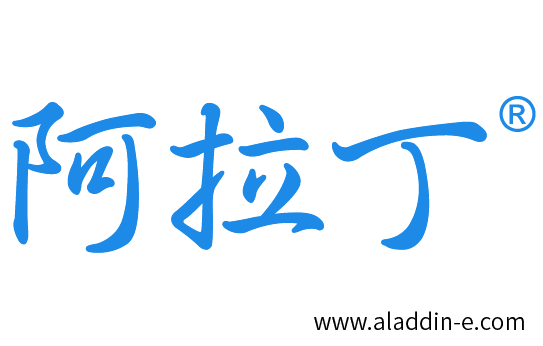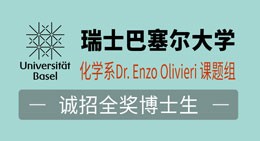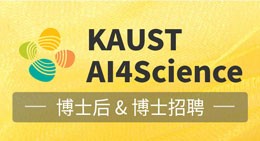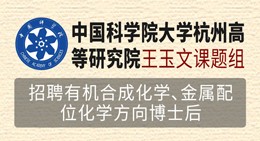样式: 排序: IF: - GO 导出 标记为已读
-
Odd elasticity of cylindrical shells and Kirchhoff–Love plates under classic continuum theory J. Mech. Phys. Solids (IF 5.0) Pub Date : 2025-03-27
Zachary Wolfgram, Martin Ostoja-StarzewskiOdd elastic behavior is investigated in 2d structures with only the odd elastic parameter K0 under classic continuum theory. For the Kirchhoff–Love plate with a constant K0, the displacement formulation is independent of the odd parameter, whereas the moment formulation shows dependence. A simply-supported plate under a uniformly distributed load and center point load is investigated using the displacement
-
-
The effect of the effective polymer network on the extremely large deformation and fracture behaviors of polyacrylamide hydrogels J. Mech. Phys. Solids (IF 5.0) Pub Date : 2025-03-20
Jincheng Lei, Yuan Gao, Shuai Xu, Linchun He, Zishun LiuCurrent constitutive theories and fracture models face difficulties in capturing the extremely large deformation and fracture behaviors of hydrogels, because the structural and mechanical properties of the effective polymer network dominated in hydrogels are still unknown. In this study, we propose a periodic random network (PRN) method to construct the effective polymer network model of polyacrylamide
-
Grain-size dependence of plastic-brittle transgranular fracture J. Mech. Phys. Solids (IF 5.0) Pub Date : 2025-03-20
Jean-Michel Scherer, Mythreyi Ramesh, Blaise Bourdin, Kaushik BhattacharyaThe role of grain size in determining fracture toughness in metals is incompletely understood with apparently contradictory experimental observations. We study this grain-size dependence computationally by building a model that combines the phase-field formulation of fracture mechanics with dislocation density-based crystal plasticity. We apply the model to cleavage fracture of body-centered cubic
-
Interlayer Shear Behaviors of Bilayer Graphene with A Moiré Pattern J. Mech. Phys. Solids (IF 5.0) Pub Date : 2025-03-19
Qiancheng Ren, Jinglan Liu, Qi Yang, Pei ZhaoThe mechanical behavior of van der Waals (vdW) interfaces under shear is important for micro-nano mechanics. However, due to the diverse structures of vdW interfaces, there is still a lack of systematic and quantitative research. Here we focus on the simplest vdW interface formed by flat carbon rings, construct twisted bilayer graphene (tBLG) with different moiré patterns through the twist angle design
-
Modeling the crack propagation of ductile fibril reinforced polymer membrane with the consideration of drawing fibrils J. Mech. Phys. Solids (IF 5.0) Pub Date : 2025-03-15
Xiangyang Zhou, Diankai Qiu, Zhutian Xu, Linfa PengMicrofibril reinforced polymer composites (MFCs) are polymer-polymer composites with ductile fibrils embedded, usually increasing the tenacity of the polymer matrix. One of the successful applications is the expanded polytetrafluoroethylene (ePTFE) reinforced perfluorinated sulfonic acid (PFSA) membrane, in which the embedded ePTFE fibrils evolve into drawing fibril connecting crack surfaces, significantly
-
A nonlinear model of shearable elastic rod from an origami-like microstructure displaying folding and faulting J. Mech. Phys. Solids (IF 5.0) Pub Date : 2025-03-15
M. Paradiso, F. Dal Corso, D. BigoniA new continuous model of shearable rod, subject to large elastic deformation, is derived from nonlinear homogenization of a one-dimensional periodic microstructured chain. As particular cases, the governing equations reduce to the Euler elastica and to the shearable elastica known as ‘Engesser’, that has been scarcely analysed so far. The microstructure that is homogenized is made up of elastic hinges
-
A multiscale-multiphysics framework for modeling organ-scale liver regrowth J. Mech. Phys. Solids (IF 5.0) Pub Date : 2025-03-14
Adnan Ebrahem, Jannes Hohl, Etienne Jessen, Marco F.P. ten Eikelder, Dominik SchillingerWe present a framework for modeling liver regrowth on the organ scale that is based on three components: (1) a multiscale perfusion model that combines synthetic vascular tree generation with a multi-compartment homogenized flow model, including a homogenization procedure to obtain effective parameters; (2) a poroelastic finite growth model that acts on all compartments and the synthetic vascular tree
-
Minimizing finite viscosity enhances relative kinetic energy absorption in bistable mechanical metamaterials but only with sufficiently fine discretization: A nonlinear dynamical size effect J. Mech. Phys. Solids (IF 5.0) Pub Date : 2025-03-13
Haning Xiu, Ryan Fancher, Ian Frankel, Patrick Ziemke, Müge Fermen-Coker, Matthew Begley, Nicholas BoechlerBistable mechanical metamaterials have shown promise for mitigating the harmful consequences of impact by converting kinetic energy into stored strain energy, offering an alternative and potentially synergistic approach to conventional methods of attenuating energy transmission. In this work, we numerically study the dynamic response of a one-dimensional bistable metamaterial struck by a high speed
-
ENNStressNet - An unsupervised equilibrium-based neural network for end-to-end stress mapping in elastoplastic solids J. Mech. Phys. Solids (IF 5.0) Pub Date : 2025-03-12
Lingfeng Li, Shun Li, Huajian Gao, Chang Qing ChenDetermining internal stress and strain fields in solid structures under external loads has been a central focus of continuum mechanics, playing a critical role in characterizing the mechanical behaviors and properties of both engineering and biological systems. With advancements in modern optical and electron microscopy techniques, strain fields can now be directly measured using sophisticated methods
-
Convex neural networks learn generalized standard material models J. Mech. Phys. Solids (IF 5.0) Pub Date : 2025-03-08
Moritz Flaschel, Paul Steinmann, Laura De Lorenzis, Ellen KuhlWe propose Generalized Standard Material Networks, a machine learning framework based on convex neural networks for learning the mechanical behavior of generalized standard materials. The theory of these materials postulates the existence of two thermodynamic potentials, the Helmholtz free energy density and the dissipation rate density potential, which alone determine the constitutive material response
-
Ultra-fast physics-based modeling of the elephant trunk J. Mech. Phys. Solids (IF 5.0) Pub Date : 2025-03-08
Bartosz Kaczmarski, Derek E. Moulton, Zéphyr Goriely, Alain Goriely, Ellen KuhlWith more than 90,000 muscle fascicles, the elephant trunk is a complex biological structure and the largest known muscular hydrostat. It achieves unprecedented control through intricately orchestrated contractions of a wide variety of muscle architectures. Fascinated by the elephant trunk’s unique performance, scientists of all disciplines are studying its anatomy, function, and mechanics, and use
-
Theoretical modeling of phase boundary mediated extra tensile strength and plasticity in high entropy alloys J. Mech. Phys. Solids (IF 5.0) Pub Date : 2025-03-07
Zhenghao Zhang, Yao Tang, Qingkun Zhao, Qishan Huang, Haofei ZhouHigh-entropy alloys (HEAs) have garnered increasing attention for their remarkable mechanical properties. However, due to the highly complex deformation mechanisms of HEAs, the current understanding of the underlying strengthening mechanisms is not yet fully developed, thereby limiting further microstructure optimization and processing. In this study, we have focused on the mechanics and theoretical
-
A continuum, computational study of morphogenesis in lithium intermetallic interfaces in solid state batteries J. Mech. Phys. Solids (IF 5.0) Pub Date : 2025-03-05
Mostafa Faghih Shojaei, Rahul Gulati, Krishna GarikipatiThe design of solid state batteries with lithium anodes is attracting attention for the prospect of high capacity and improved safety over liquid electrolyte systems. The nature of transport with lithium as the current carrier has as a consequence the accretion or stripping away of the anode with every charge–discharge cycle. While this poses challenges from the growth of protrusions (dendrites) to
-
A strain gradient phase field model for heterogeneous materials based on two-scale asymptotic homogenization J. Mech. Phys. Solids (IF 5.0) Pub Date : 2025-03-04
Heliang You, Meizhen Xiang, Yuhang Jing, Licheng Guo, Zhiqiang YangDue to the inherent microstructural heterogeneity of heterogeneous materials, their macroscopic fracture behavior differs significantly from that of homogeneous materials, exhibiting phenomena such as anisotropic fracture energy and strain gradient effects. To investigate the effect of microstructure on macroscopic fracture behavior, this study proposes a novel multiscale phase field model. Based on
-
Strength and stiffness of network materials with preferentially oriented fibers J. Mech. Phys. Solids (IF 5.0) Pub Date : 2025-03-03
S.N. Amjad, R.C. PicuMaterials made from fibers, referred to here as Network materials, are ubiquitous in biology and engineering. In most practical situations, fibers have preferential orientation in one spatial direction or in a plane. Here we use discrete network models to derive the relationship between the stiffness and strength of networks with pre-aligned fibers and network parameters, including the degree of alignment
-
Coupled magneto-mechanical growth in hyperelastic materials: Surface patterns modulation and shape control in bio-inspired structures J. Mech. Phys. Solids (IF 5.0) Pub Date : 2025-03-03
Zhanfeng Li, Yafei Wang, Zuodong Wang, Chennakesava Kadapa, Mokarram Hossain, Xiaohu Yao, Jiong WangMagneto-mechanical coupling in the growth of soft materials presents challenges due to the complex interactions between magnetic fields, mechanical forces, and growth-induced deformations. While growth modeling has been extensively studied, integrating magnetic stimuli into growth processes remains underexplored. In this work, we develop a 3D governing system for capturing the coupled magneto-mechanical
-
Thermo-chemo-mechanical model and variational multiscale framework for material and geometric evolution in frontal polymerization J. Mech. Phys. Solids (IF 5.0) Pub Date : 2025-03-03
Ignasius P.A. Wijaya, Philippe Geubelle, Arif MasudThis paper presents a thermodynamically consistent model for thermo-chemo-mechanical processes in frontal polymerization (FP). The model consists of cure kinetics, heat transfer, and finite strain kinematics of nonlinear inelastic solid undergoing finite deformation. The constitutive relations are derived by enforcing non-negative entropy production which implies the existence of cure induced inelastic
-
Multiple scales homogenisation of a porous viscoelastic material with rigid inclusions: Application to lithium-ion battery electrodes J. Mech. Phys. Solids (IF 5.0) Pub Date : 2025-02-28
J.M. Foster, A.F. Galvis, B. Protas, S.J. ChapmanThis paper explores the mechanical behaviour of the composite materials used in modern lithium-ion battery electrodes. These contain relatively high modulus active particle inclusions within a two-component matrix of liquid electrolyte which penetrates the pore space within a viscoelastic polymer binder. Deformations are driven by a combination of (i) swelling/contraction of the electrode particles
-
Physics-informed recovery of nonlinear residual stress fields in an inverse continuum framework J. Mech. Phys. Solids (IF 5.0) Pub Date : 2025-02-27
José A. Sanz-Herrera, Alain GorielyResidual stresses play a critical mechanical role in both industrial and biomechanical applications. In biological tissues, residual stresses arise from growth and remodeling processes under physiological or pathological conditions and have been extensively modeled within the framework of nonlinear elasticity. These modeling efforts have enabled direct computation of residual stress patterns based
-
Taylor-Quinney coefficient determination from simultaneous strain and temperature measurements of uniform and localized deformation in tensile tests J. Mech. Phys. Solids (IF 5.0) Pub Date : 2025-02-27
Jarrod L. Smith, Jeremy D. Seidt, Carter J. Fietek, Amos GilatExperimental determination of the Taylor-Quinney coefficient (TQC), β, from tensile tests at nominal strain rates of 1.0 s-1 and 500 s-1 is presented. Simultaneous full-field measurements of the deformation (strain) and temperature on the surface of the specimens are made throughout the tests, including in the localized region during necking. These measurements provide means to determine the value
-
Bimodal scaling law and size effect in superelastic nanopillars J. Mech. Phys. Solids (IF 5.0) Pub Date : 2025-02-27
Mostafa Karami, Xian ChenShape memory alloys that can deform and then spring back to their original shape, have found a wide range of applications in the medical field, from heart valves to stents. As we push the boundaries of technology creating smaller, more precise tools for delicate surgery treatments, the behavior of these alloys at tiny scales becomes increasingly crucial. In this study, we discover that the size effect
-
Mechanics of CO2-induced dynamic covalent polymer networks: Constitutive modeling and crack healing J. Mech. Phys. Solids (IF 5.0) Pub Date : 2025-02-27
Haoxiang Deng, Haixu Du, Yanchu Zhang, Ketian Li, Qiming WangCO2-induced dynamic covalent polymer networks (DCPNs) have received significant attention due to their capability of sequestering CO2 to remodel material properties. Despite the promising success of carbon sequestration in the polymer, the mechanistic understanding of the CO2-induced polymer network is still at the very beginning. A theoretical framework to understand the CO2-induced formation of bulk
-
A steady-state frictional crack in a strip J. Mech. Phys. Solids (IF 5.0) Pub Date : 2025-02-25
Efim A. Brener, Eran BouchbinderThe analogy between frictional cracks, propagating along interfaces in frictional contact, and ordinary cracks in bulk materials is important in various fields. We consider a stress-controlled frictional crack propagating at a velocity cr along an interface separating two strips, each of height H, the frictional counterpart of the classical problem of a displacement-controlled crack in a strip, which
-
Control of competing delamination in peeling-based microtransfer printing J. Mech. Phys. Solids (IF 5.0) Pub Date : 2025-02-24
Aoyi Luo, Yiping Zhou, Yunfeng Yan, Jianyu Li, Changhong CaoThis paper investigates the mechanics of peeling-based microtransfer printing, focusing on the competing delamination at the stamp/ink and the ink/substrate interfaces under both high-degree and zero-degree peeling configurations. We found that the thickness and modulus contrast between the stamp and the ink significantly affect the ratio of the energy release rates at these two interfaces. Our findings
-
Accretion and ablation in deformable solids using an Eulerian formulation: A finite deformation numerical method J. Mech. Phys. Solids (IF 5.0) Pub Date : 2025-02-21
S. Kiana Naghibzadeh, Anthony Rollett, Noel Walkington, Kaushik DayalSurface growth, i.e., the addition or removal of mass from the boundary of a solid body, occurs in a wide range of processes, including the growth of biological tissues, solidification and melting, and additive manufacturing. To understand nonlinear phenomena such as failure and morphological instabilities in these systems, accurate numerical models are required to study the interaction between mass
-
Investigating the formation of a geometrically necessary boundary using discrete dislocation dynamics J. Mech. Phys. Solids (IF 5.0) Pub Date : 2025-02-19
Felix Frankus, Yash Pachaury, Anter El-Azab, Benoit Devincre, Henning Friis Poulsen, Grethe WintherA systematic numerical study using discrete dislocation dynamics has been conducted to investigate the formation of geometrically necessary dislocation boundaries (GNBs), a fundamental component of dislocation patterning and work-hardening. The simulations presented in this paper focus on GNBs forming along the (010) plane, which are observed in the 121111 copper orientation on the β-fibre of the FCC
-
Measurement of temperature-dependent viscoelastic compressibility of highly-filled thermosets using inert gas pressure J. Mech. Phys. Solids (IF 5.0) Pub Date : 2025-02-18
Sukrut Prashant Phansalkar, Bongtae HanHighly filled thermosets are widely used to encapsulate chips in the semiconductor packaging industry. A complete set of viscoelastic properties are required for package designs with optimum mechanical reliability. A novel test method, based on inert gas pressure, is proposed and implemented to measure the temperature-dependent viscoelastic hydrostatic creep compliance (or compressibility) of filled
-
Inflation of a polydomain nematic elastomeric membrane J. Mech. Phys. Solids (IF 5.0) Pub Date : 2025-02-17
Lingrui Zhu, Mengqi He, Baihong Chen, Jin Qian, Rui XiaoThe directors are randomly distributed in polydomain liquid crystal elastomers (LCEs), which can be rearranged upon external loading. This can further lead to a polydomain-monodomain transition, accompanied by a change from an opaque state to a fully transparent state. Currently, the mechanical response and the related phase transition in polydomain LCEs are typically characterized in uniaxial loading
-
Phase-augmented digital image correlation for high-accuracy deformation measurement: Theory, validation, and application to constitutive law learning J. Mech. Phys. Solids (IF 5.0) Pub Date : 2025-02-14
Rahul Danda, Xinxin Wu, Sheng Mao, Yin Zhang, Ting Zhu, Shuman XiaDigital image correlation (DIC) is a prominent technique for full-field, non-contact deformation characterization. Despite its sub-pixel sensitivity for displacement measurement, conventional DIC often suffers from inadequate signal-to-noise ratios (SNRs) when measuring small deformations in stiff and/or brittle materials. This work presents phase-augmented DIC (PA-DIC), a novel method that integrates
-
An extended neo-classical model for nematic elastomers with transversely isotropic semisoft elasticity J. Mech. Phys. Solids (IF 5.0) Pub Date : 2025-02-13
Donghao Li, Ziang Peng, Yuzhen Chen, Yongzhong HuoNematic elastomers exhibit transversely isotropic semisoft elasticity due to the coupling of the liquid crystal mesogen and polymer network. Existing constitutive models are unable to simultaneously capture both the elastic anisotropy at small deformations and the semisoft stress plateau under large orthogonal loadings. Based on the decompositions of the strain energy and the deformation gradient,
-
Unusual stretching–twisting of liquid crystal elastomer bilayers J. Mech. Phys. Solids (IF 5.0) Pub Date : 2025-02-12
Zhijun Dai, Ya Wen, Zhiang Chen, Yijian Chen, Yifan Yang, Mengdi Gao, Yuzhen Chen, Fan XuLiquid crystal elastomers (LCEs), as a unique class of smart soft materials combining the properties of liquid crystals and hyperelasticity, are capable of rapid, anisotropic, and reversible deformations in response to mechanical, thermal or optical stimuli. Here, we report a hitherto unknown stretching-induced twisting behavior of LCE bilayer strips. Under uniaxial stretching, we reveal that due to
-
Analysis of axisymmetric necking of a circular dielectric membrane based on a one-dimensional model J. Mech. Phys. Solids (IF 5.0) Pub Date : 2025-02-10
Xiang Yu, Yibin FuTo facilitate the understanding of the mechanisms underlying the electric breakdown of dielectric elastomers, we derive a one-dimensional (1d) model for axisymmetric necking in a dielectric membrane subjected to equibiaxial stretching and an electric field, starting from the three-dimensional (3d) nonlinear electroelasticity theory. Our reduction is built on the variational asymptotic method, so that
-
Mechanics of liquid crystal inclusions in soft matrices J. Mech. Phys. Solids (IF 5.0) Pub Date : 2025-02-10
Yifei Bai, Laurence BrassartThe mechanical behaviour of composites of liquid crystal inclusions embedded in soft matrices involves a complex interplay between the elasticity of the matrix, the surface elasticity of the interfaces, and the reorientation of the liquid crystal molecules. Directors of the (nematic) liquid crystal tend to be aligned in the bulk, but may ”anchor” along the interface. In addition, the interface deforms
-
Grid hollow octet truss lattices that are stable at low relative density J. Mech. Phys. Solids (IF 5.0) Pub Date : 2025-02-08
Peijie Zhang, Xueyan Chen, Penghui Yu, Kun Zhao, Haoxiang Ma, Shiqiu Liu, Huifeng Tan, Vincent Laude, Muamer KadicStretching-dominated lattice materials are renowned for their lightweight nature and exceptional mechanical properties. These materials, however, have historically struggled with scalability towards low relative densities at which they often exhibit unstable oscillation behavior. Here, we propose a viable solution to this issue by integrating hollow truss elements and a grid distribution into the conventional
-
Torsion-mediated instabilities in confined elastic layers J. Mech. Phys. Solids (IF 5.0) Pub Date : 2025-02-07
Tara K. Venkatadri, Chuwei Ye, Tal Cohen, Shaoting LinWhen a soft elastic layer confined between two rigid substrates is subjected to tensile loads, the stressed layer exhibits various modes of elastic instability that influence its mechanical response. While previous studies have primarily focused on analyzing these instabilities under normal tension, this study systematically investigates the impact of combined tension–torsion loading on the emergence
-
A unified anisotropic phase field model for progressive failure of fiber-reinforced composite materials J. Mech. Phys. Solids (IF 5.0) Pub Date : 2025-02-07
Yuanfeng Yu, Chi Hou, Meiying ZhaoFiber-reinforced composite materials have gained considerable traction in various applications due to their exceptional properties, but the multicomponent nature makes their failure modes more complex, so the research of failure mechanism for composites is very important for the safety of the structure in use. In this work, a new unified anisotropic phase field model is proposed. Firstly, a new crack
-
Modeling coupled electro-chemo-mechanical phenomena within all-solid-state battery composite cathodes J. Mech. Phys. Solids (IF 5.0) Pub Date : 2025-02-06
Kasra Taghikhani, William Huber, Peter J. Weddle, Mohsen Asle Zaeem, J.R. Berger, Robert J. KeeAll-solid-state batteries (ASSBs) are promising candidates for next-generation energy storage. However, realizing their potential requires an understanding of their underlying coupled, multiphysics behaviors. In an effort to understand these complex interactions, the present paper develops and applies a finite-element phase-field model that represents coupled electro-chemo-mechanical behaviors in composite
-
Parthenocissus tricuspidata tendril: A mechanically robust structural design with multiple functions J. Mech. Phys. Solids (IF 5.0) Pub Date : 2025-02-04
Jin-Hui Zhou, Lin Zhang, Sen-Zhen Zhan, Qiao Zhang, Yuxin Sun, Xi-Qiao Feng, Zi-Long ZhaoThrough an array of spatially distributed tendril pads, Parthenocissus tricuspidata adheres itself firmly to the surfaces of targets such as trees and walls. The tendril pads, which form unique and intriguing layouts, play a critical role in supporting plant organs. However, the relationship between their geometric forms and mechanical properties remains inadequately understood. In this paper, we combine
-
Synergistic toughening mechanisms of macro- and micro-structures in nacre: Effects of T-stresses J. Mech. Phys. Solids (IF 5.0) Pub Date : 2025-02-01
Yi Yan, Xi-Qiao FengThrough long-term evolution, biological tissues have optimized their components and structures at multiple length scales to meet the requirements of mechanical properties and biological functions. In this study, we explore how the shell macrostructure of nacre and its brick–mortar microstructure are synergistically designed to adapt to external mechanical conditions. We found that the T-stress effect
-
The deformation mode transition of indented elastic thin shell induced by localized curvature imperfection J. Mech. Phys. Solids (IF 5.0) Pub Date : 2025-02-01
Chongxi Jiao, Xinming QiuNumerous studies have indicated that spherical thin shells exhibit imperfection sensitivity under external pressure or top-indentation, which can greatly impair their loading strength and stability. In this paper, a surprising shift in buckling behavior is achieved for elastic thin shell by locally manipulating the annular imperfection of curvature on a sphere, which reverses the harmfulness wrought
-
Electromechanical buckling of periodic patterns on stiff film bonded to a compliant substrate – Analytical and numerical postbuckling analyses J. Mech. Phys. Solids (IF 5.0) Pub Date : 2025-01-31
Samy Abu-SalihIn this work, the analytical and numerical analyses of the electromechanical buckling and postbuckling states of a planar film bonded to a compliant dielectric substrate are presented. The film is a stiff thin metal layer and forms an elastic electrode. The compliant substrate is attached to a bottom fixed and rigid electrode. The film is simultaneously subjected to in-plane compression stresses, which
-
Magnetothermal dehydration induced deformation of hydrogel structures: Modelling and experiment J. Mech. Phys. Solids (IF 5.0) Pub Date : 2025-01-31
Jingda Tang, Huangsan Wei, Wenjie Zhang, Jiayi Lin, Chao Yuan, Tiejun WangMagnetic hydrogels have found broad applications in soft robotics and bioengineering, due to their facile actuation response and good biocompatibility. However, the actuation of magnetic hydrogels embedded with superparamagnetic nanoparticles remains challenging because of the low magnetization. In this work, we investigate the magnetothermal dehydration induced deformation of magnetic hydrogel-elastomer
-
A chemo-thermo-mechanically coupled theory of photo-reacting polymers: Application to modeling photo-degradation with irradiation-driven heat transfer J. Mech. Phys. Solids (IF 5.0) Pub Date : 2025-01-31
Keven Alkhoury, Shawn A. ChesterRecent years have seen extensive research on advanced materials, including stimuli-responsive, renewable/degradable, multi-functional materials, and more, offering opportunities for advances in engineering technology. In general, these materials are expected to undergo chemical reactions during their service life. This work formulates a comprehensive thermodynamically consistent, frame-indifferent
-
Normal dynamic adhesion of an infinite elastomer layer on a statistically rough substrate J. Mech. Phys. Solids (IF 5.0) Pub Date : 2025-01-30
ZiJian Chen, Peng Zhang, Tao Wang, XiaoPing Wu, Zhong Zhang, Yang Zhao, Ping GuThe dynamic adhesion properties under different pulling speeds on rough substrates have potential value in practical applications. Our primary objective is to ascertain the influence of the pulling speed on the normal stress required for delamination when an infinite elastomer layer delaminates from a statistically random rough rigid substrate. We decouple the interface delamination velocity from the
-
A theory of fatigue fracture in viscoelastic solids J. Mech. Phys. Solids (IF 5.0) Pub Date : 2025-01-28
Guillaume Lostec, Julien Caillard, Davide Colombo, Rong LongCrack propagation in viscoelastic solids under cyclic loading is a fundamental problem underlying the fatigue fracture of elastomers. We present a continuum theory to determine the crack extension per loading cycle for various loading amplitudes, loading frequencies and viscoelastic properties. This is achieved by examining the energy dissipated through viscous effects and the energy available for
-
t-PiNet: A thermodynamics-informed hierarchical learning for discovering constitutive relations of geomaterials J. Mech. Phys. Solids (IF 5.0) Pub Date : 2025-01-27
Pin Zhang, Konstantinos Karapiperis, Oliver WeegerMore attention has been paid to integrating existing knowledge with data to understand the complex mechanical behaviour of geomaterials, but it incurs scepticism and criticism on its generalizability and robustness. Moreover, a common mistake in current data-driven modelling frameworks is that history internal state variables and stress are known upfront and taken as inputs, which violates reality
-
A dynamic homogenization method for elastic wave band gap and initial-boundary value problem analysis of piezoelectric composites with elastic and viscoelastic periodic layers J. Mech. Phys. Solids (IF 5.0) Pub Date : 2025-01-23
Mengyuan Gao, Zhelong He, Jie Liu, Chaofeng Lü, Guannan WangIn this paper, we present a dynamic homogenization model for elastic wave propagation analysis in piezoelectric composites with periodic electroelastic and viscoelectroelastic layers. The model is developed using a multiscale homogenization method based on an asymptotic expansion of displacement and electric potential up to the 8th order. By employing the formulation structure of gradient elasticity
-
A unified morphomechanics theory framework for both Euclidean and non-Euclidean curved crease origami J. Mech. Phys. Solids (IF 5.0) Pub Date : 2025-01-22
Yinzheng Yu, Ruoman Zhu, Kai Wei, Xujing YangConventional curved crease origami exhibits only Euclidean metrics at the crease, where the surfaces on either side should consistently display convexity on one side and concavity on the other, unfavorably leading to restricted morphologies. Herein, we focus on a special type of origami: non-Euclidean curved crease origami. Additionally, we establish a morphomechanics framework that facilitates the
-
Indentation on a constrained electroactive gel J. Mech. Phys. Solids (IF 5.0) Pub Date : 2025-01-21
Guozhan XiaElectroactive gel (EAG), a smart material with tunable physical properties, has attracted increasingly more attention in various engineering fields. This paper presents the analytical solutions for the frictionless contact between a rigid spherical indenter and a block of constrained swollen EAG, which is also subject to a transverse electric field. The classical JKR model is extended to involve the
-
A discrete–continuous model of coupled plasticity and fracture J. Mech. Phys. Solids (IF 5.0) Pub Date : 2025-01-21
Zhangtao Li, Zhuo Zhuang, Zhijie Li, Tao Wang, Zhanli Liu, Yinan CuiUnderstanding the interplay between plasticity and fracture is the basis for the prediction and design of materials and structures, which is controlled by the concurrent dynamics of discrete dislocations and cracks. However, till now, how to directly capture the co-evolution of a three-dimensional (3D) discrete dislocation network and arbitrary crack remains challenging due to their intrinsic complex
-
Approximating arbitrary traction–separation-laws by means of phase-field theory — Mathematical foundation and numerical implementation J. Mech. Phys. Solids (IF 5.0) Pub Date : 2025-01-20
H. Lammen, S. Conti, J. MoslerCohesive zone models are powerful for capturing non-linear material failure. In contrast to classic bulk material models, they are based on so-called traction–separation-laws – relations connecting the stress vector acting at an interface (e.g., at the crack) to its energetically dual variable being the displacement jump (e.g., opening of the crack). A major drawback of cohesive zone models is that
-
Snap-through instability-driven enhancement of magnetoelectric coupling in soft electrets J. Mech. Phys. Solids (IF 5.0) Pub Date : 2025-01-19
Kai Tan, Lingling Chen, Shengyou Yang, Qian DengConventional magnetoelectric (ME) systems often suffer from the reduced conversion efficiency at low frequencies due to the low power input and relatively small ME coupling coefficient, constraining their applications in magnetic sensing and energy harvesting. In this work, we present a novel approach of utilizing the snap-through instability of soft ME materials to enhance their electric responses
-
3D phase-field cohesive fracture: Unifying energy, driving force, and stress criteria for crack nucleation and propagation direction J. Mech. Phys. Solids (IF 5.0) Pub Date : 2025-01-17
Ye Feng, Lu HaiThis paper presents a 3D variational phase-field cohesive fracture model that incorporates crack direction information into the energy functional. Through an analytical homogenization procedure, the crack normal is obtained in closed form based on the principle of energy minimization. We find that, within the proposed model, several widely recognized crack direction criteria—including the minimum potential
-
Hydromechanical field theory of plant morphogenesis J. Mech. Phys. Solids (IF 5.0) Pub Date : 2025-01-15
Hadrien Oliveri, Ibrahim CheddadiThe growth of plants is a hydromechanical phenomenon in which cells enlarge by absorbing water, while their walls expand and remodel under turgor-induced tension. In multicellular tissues, where cells are mechanically interconnected, morphogenesis results from the combined effect of local cell growths, which reflects the action of heterogeneous mechanical, physical, and chemical fields, each exerting
-
The impacts of thermoelastic anisotropy and grain boundary misorientation on microcracking in ceramics J. Mech. Phys. Solids (IF 5.0) Pub Date : 2025-01-14
Andrew R. Ericks, Frank W. Zok, Daniel S. Gianola, Matthew R. BegleyThis paper examines the role of thermoelastic anisotropy on grain boundary cracking in brittle materials using a highly efficient computational framework. Energy release rates (ERRs) are computed for 35 materials spanning all seven crystal systems. Two crack geometries are considered: short interface cracks in isolated bicrystal plates, and cracked grain boundaries in polycrystal plates comprising
-
Mechanobiological modeling of viscoelasticity in soft tissue growth and morphogenesis J. Mech. Phys. Solids (IF 5.0) Pub Date : 2025-01-13
Zhongya Lin, Weizhi Huang, Shuang Li, Mingfeng Wang, Jinshuai Bai, Xindong Chen, Xi-Qiao FengMost soft biological tissues feature distinct mechanical properties of viscoelasticity, which play a significant role in their growth, development, and morphogenesis. In this paper, we propose a mechanobiological viscoelastic model in the framework of thermodynamics. The multiscale mechanisms underlying the viscoelasticity of tissues are clarified, such as extracellular matrix composition and organization
-
Fire-induced damage behaviour in corrosion-damaged concrete: Thermal-mechanical coupling phase field meso-scale modeling J. Mech. Phys. Solids (IF 5.0) Pub Date : 2025-01-13
Kunting Miao, Zichao Pan, Xurui Fang, Airong ChenThe mechanical performance degradation of concrete in marine environments is often caused by multi-hazard, such as long-term environmental loads and short-term extreme loads, which also lead to more complex damage pattern. This study presents a thermal-mechanical coupling phase field meso‑scale model to simulate the damage evolution process of concrete subjected to rebar corrosion and fire hazards
-
Modelling of stress-state-dependent ductile damage with gradient-enhancement exemplified for clinch joining J. Mech. Phys. Solids (IF 5.0) Pub Date : 2025-01-13
Johannes Friedlein, Julia Mergheim, Paul SteinmannA coupled finite plasticity ductile damage and failure model is proposed for the finite element simulation of clinch joining, which incorporates stress-state dependency and regularisation by gradient-enhancement of the damage variable. Ductile damage is determined based on a failure indicator governed by a failure surface in stress space. The latter is exemplary chosen as a combination of the Hosford–Coulomb
-
Strain-rate-dependent plastic deformation and Ductile-to-Brittle transition in epithelial tissues J. Mech. Phys. Solids (IF 5.0) Pub Date : 2025-01-12
Qigan Gao, Yixia Chen, Lingjie Yang, Hongyuan JiangAs epithelial tissues are ubiquitous and naturally exposed to mechanical strains at various rates in normal functioning, it is crucial to understand their rate-dependent mechanical response and fracture failure behaviors. In this study, we utilize the modified cell vertex model, which allows for cell–cell detachment transition (T4 transition), to perform uniaxial tensile tests on cell monolayers and

































 京公网安备 11010802027423号
京公网安备 11010802027423号